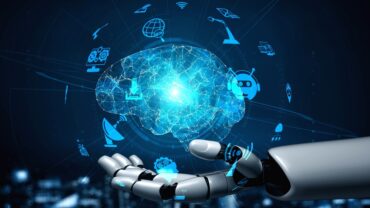
Blockchain can help ensure the success of IoT and AI by ensuring the trustworthiness and accuracy of the data being used by systems.
Can blockchain bring order to the Internet of Things and other data-intensive realms? There’s been no shortage of discussion, punctuated by doubt and hype, about the potential of blockchain. The idea being that the most popular distributed ledger technology could be used to globally keep track of events, transactions, and data.
In a recent post, we explored three design patterns by which blockchain technology could be adapted to assure high levels of trust in data collected from across the Internet of Things — through provisioning, usage tracing, and asset decommissioning.
See also: Blockchain for Master Data Management
Blockchain may be just what is needed to help IoT — and another technology area that is highly dependent on trust in data, artificial intelligence — leap the wide trust chasm that has been slowing down progress. In a recent post, Jerry Cuomo, IBM Fellow and vice president blockchain technologies at IBM, observes that blockchain “is at the nexus of technologies like IoT, AI, and cloud. It has the means of bringing the missing element of trust that is currently lacking from these technologies. Trust is gained through diversity of users.”
He adds: “in data we trust…well after you add a little blockchain.”
When it comes to accepting data streams from IoT devices in various locales, “do we really know where these data came from and should we be making decisions and transacting based on data we cannot validate?” Cuomo asks. “For example, did weather data really originate from a censor in the Atlantic Ocean, or did the shipping container really not exceed the agreed temperature limit?” IoT use cases “all share the same issue with trust,” he adds.
IoT with blockchain can bring “real trust” to data, Cuomo explains. A blockchain structure provides all devices, at the time of their creation, “an identity that can be validated and verified throughout their lifecycle with blockchain. With a device identity protocol, each device can have its own blockchain public key and send encrypted challenge and response messages to other devices, thereby ensuring a device remains in control of its identity. In addition, a device with an identity can develop a reputation or history that is tracked by a blockchain.” Smart contracts then come into play,” providing automated coordination and authorization for transactions and interactions.”
The potential trust advantages blockchain may deliver aren’t just limited to IoT. Artificial intelligence is another technology initiative that heavily depends upon trust in the data-driven decisions being delivered, on areas ranging from customer preferences to supply-chain flow.
“AI is, for all intents and purposes, a centralized process,” Cuomo says. “An end-user must have extreme faith in the central authority to produce a trusted business outcome. By decentralizing the three key elements of AI — that is, data, models, and analytics — blockchain can deliver the trust and confidence often needed for end-users to fully adopt and rely on AI-based business processes.”
Imagine if AI services could produce a “forensic report, verified by a third party, to prove to you, beyond a reasonable doubt, how and when businesses are using your data once those are ingested,” he suggests. “A blockchain ledger can be used as a digital rights management system, allowing your data to be ‘licensed’ to the AI provider under your terms, conditions, and duration. The ledger would act as an access management system storing the proofs and permission by which a business can access and use the user’s data.”
The success of both IoT and AI — especially if they are facilitating real-time decision-making that could make or break a business — depends on the trustworthiness and accuracy of the data being provided to these systems. There need to be high-level methods of accountability and lineage-tracing that many current data management systems lack, or are too localized or enterprise-centric to address larger, more global contexts. Blockchain — or similar distributed ledger technology networks — may finally provide the foundation of trust that will make IoT and AI the game-changing innovations they were meant to be.





























